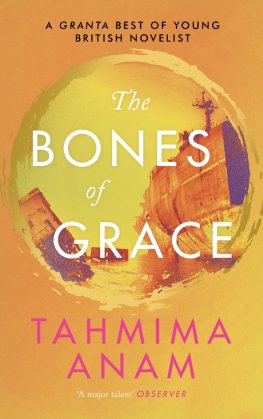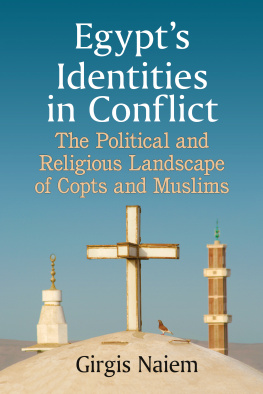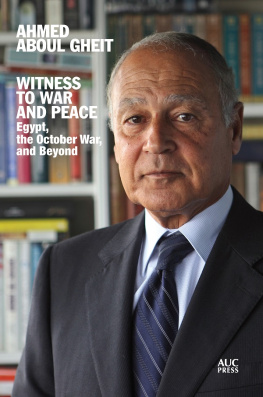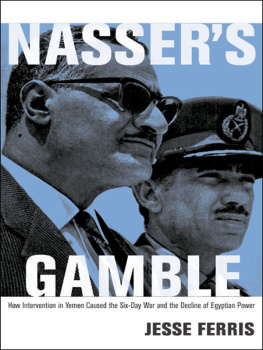First published in 1996 in Great Britain by
FRANK CASS PUBLISHERS
Crown House, 47 Chase Side
Southgate, London N14 5BP
and in the United States of America by
FRANK CASS PUBLISHERS
c/o ISBS, 5824 N.E. Hassalo Street
Portland, Oregon 97213-3644
Website: www.frankcass.com
Copyright 1996 Joseph Finklestone
Reprinted 2003
British Library Cataloguing in Publication Data
Finklestone, Joseph
Anwar Sadat: Visionary Who Dared
I. Title
962.054092
ISBN 0-7146-3487-5 (cloth)
ISBN 0-7146-4165-0 (paper)
ISBN 978-1-1351-9565-6 (ePub)
Library of Congress Cataloging-in-Publication Data
Finkelstone
Anwar Sadat: visionary who dared / Joseph Finklestone.
p. cm.
Includes index.
ISBN 0-7146-3487-5 (cloth) ISBN 0-7146-4165-0 (paper).
1. Sadat, Anwar, 1918 . 2. Presidents-Egypt-Biography.
I. Title.
DT 107.828.S23F56 1996
962.054092-dc20
All rights reserved. No part of this publication may be reproduced in any form or by any means, electronic, mechanical, photocopying, recording or otherwise, without the prior permission of Frank Cass and Company Limited.
Typset by Vitaset, Paddock Wood
Reprinted in Great Britain by Anthony Rowe, Eastbourne, Sussex.
I am very grateful to many people in Israel, Egypt and other Arab countries, in Britain and the United States for aid and encouragement in undertaking the task of writing about one of the most complex as well as one of the most charismatic figures in modern world history. Many participants in the events described spoke to me frankly off the record during several visits to the area. I learned to admire the Egyptian people and their fortitude. I also wish to thank Frank Cass, who so quickly and enthusiastically accepted the idea for this book, and Norma Marson, who edited it with such intelligence, understanding and devotion.
Though the views expressed, and any shortcomings, are entirely my own, I wish particularly to thank, for their advice and recollections given over a number of years: Madame Jihan Sadat: Dr Osama al-Baz (chief political aide to President Hosni Mubarak of Egypt); Mr David Kimche; the late Jon Kimche; Mr Martin Fuller (British Foreign and Commonwealth Office Research Department); and Mr Alexander Golytsin (Minister-Counsellor, Russian Embassy, London).
All writers about Anwar Sadat will always feel grateful to Professor Raphael Israeli for his finely researched Man of Defiance: A Political Biography of Anwar Sadat (London: Weidenfeld & Nicolson, 1985). Although Mohamed Heikals books are very controversial and I accept few of his opinions, I cannot deny the power and value of his writings on the Nasser-Sadat period. Other books which I found very helpful or stimulating were:
Jimmy Carter, Keeping Faith: Memoirs (London: Collins, 1982)
Moshe Dayan, Story of My Life (London: Weidenfeld & Nicolson, 1976)
Breakthrough (London: Weidenfeld & Nicolson, 1981)
Abba Eban, An Autobiography (London: Weidenfeld & Nicolson, 1978)
Personal Witness (London: Jonathan Cape, 1993)
Felipe Fernandez-Armesto, Sadat and his Statecraft (Oxford: Kensal Press, 1982)
Mohamed Heikal, The Road to Ramadan (London: Collins, 1975)
Autumn to Fury (London: Andr Deutsch, 1983)
Illusions of Triumph (London: Harper Collins, 1992)
Major-General Chaim Herzog, The War of Atonement (London: Weidenfeld & Nicolson, 1975)
David Hirst and Irene Beeson, Sadat (London: Faber & Faber, 1981)
Mohamed Ibrahim Kamel, The Camp David Accords (London: Routledge & Kegan Paul, 1986)
Doreen Kays, Frogs and Scorpions (London: Frederick Muller, 1984)
Elie Kedourie, Politics in the Middle East (Oxford: Oxford University Press, 1992)
David Kimche, The Last Option (London: Weidenfeld & Nicolson, 1991)
Henry Kissinger, Years of Upheaval (London: Weidenfeld & Nicolson/Michael Joseph, 1982)
Joseph P. Lorenz, Egypt and the Arabs (Boulder, CO: Westview Press, 1990)
Golda Meir, My Life (London: Weidenfeld & Nicolson, 1975)
Conor Cruise OBrien, The Siege (London: Weidenfeld & Nicolson, 1986)
David Pryce Jones, The Closed Circle (London: Weidenfeld & Nicolson, 1989)
Yitzhak Rabin, The Rabin Memoirs (London: Weidenfeld & Nicolson, 1979)
Gideon Raphael, Destination Peace (London: Weidenfeld & Nicolson, 1981)
Anwar el-Sadat, In Search of Identity (London: Collins Fontana, 1978)
Those I Have Known (London: Jonathan Cape, 1985)
Jihan Sadat, A Woman of Egypt (London: Bloomsbury, 1987)
Saad Shazli, The Crossing of Suez (San Francisco: American Mid-East Research, 1980)
Negotiating for Peace in the Middle East (New York: Johns Hopkins, 1983)
P.J. Vatikiotis, History of Modern Egypt (London: Weidenfeld & Nicolson, 1991)
Ezer Weizman, The Battle For Peace (London: Bantam Books, 1981)
When I first met Jihan Sadat I was struck by her dignity and beauty as she moved around the room with an unhurried calm. As the wife of President Anwar Sadat, she was invariably stylishly dressed some Egyptians used to envy her smartly-cut dresses, assuming them to be expensive European imports, although this was by no means always the case. They failed to understand that Jihan was merely determined to look her best as befitted the wife of the President of Egypt. She was, in fact, far less vain than her husband, whom she used to chide gently for his love of elaborate uniforms.
After centuries of living under the shadow of great powers, often humiliated and derided, Egypt, under Sadat, was grappling with tremendous, almost insoluble problems inadequate resources, insufficient fertile land and a burgeoning population which was increasing at the rate of over one million every year. In dealing with these enormous problems, President Sadat realized that he had to find a way of breaking an age-old taboo in order to make peace with the Jewish State of Israel. For Sadat, unlike others, saw a link between solving problems at home and making peace with Israel. Jihan Sadat understood better than anyone the huge difficulties he faced. She also understood that she had to be strong, and aspects of that strength remain today.
Jihan, who now lectures at the University of Maryland in the US, was happy when I told her that I was writing a biography of Anwar Sadat, and she was touched to learn of the friendship that had developed between the leader of the largest Arab state and a journalist working at the time for two Jewish newspapers the Tel Aviv daily










